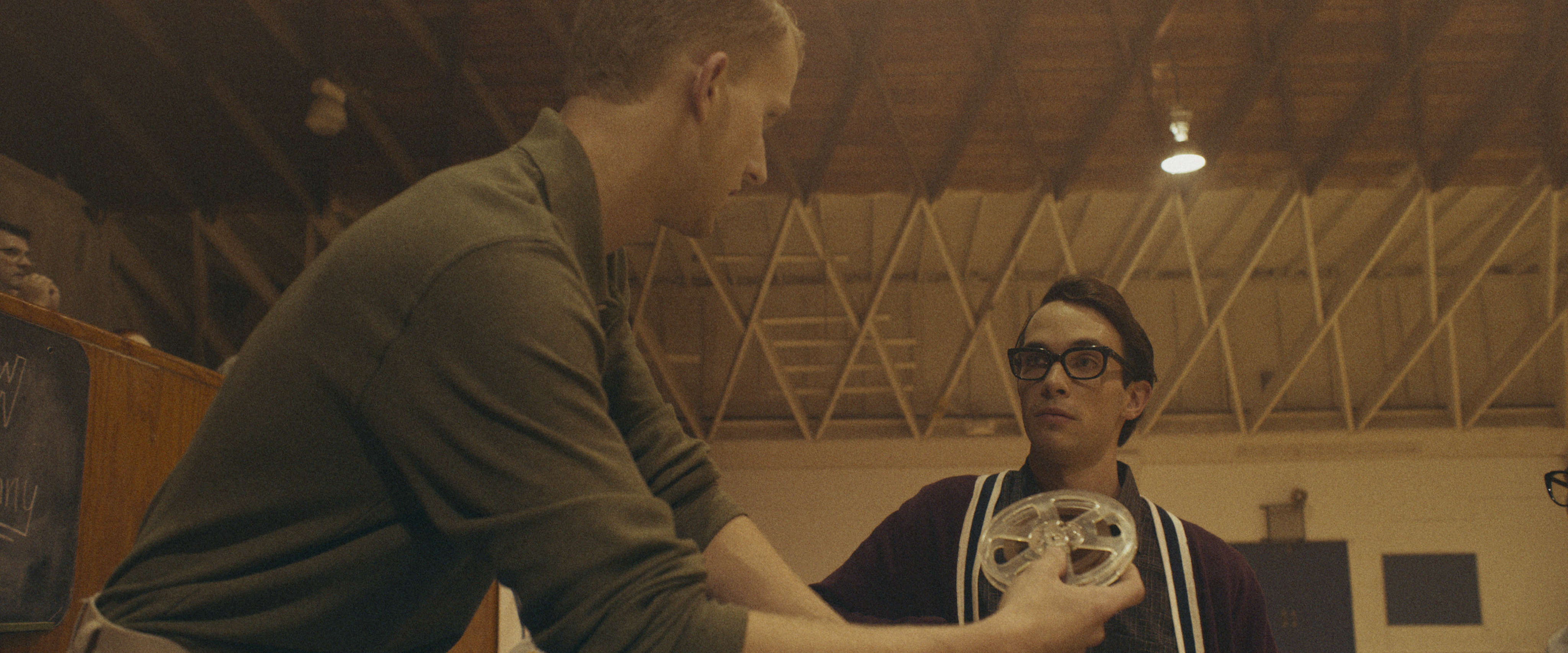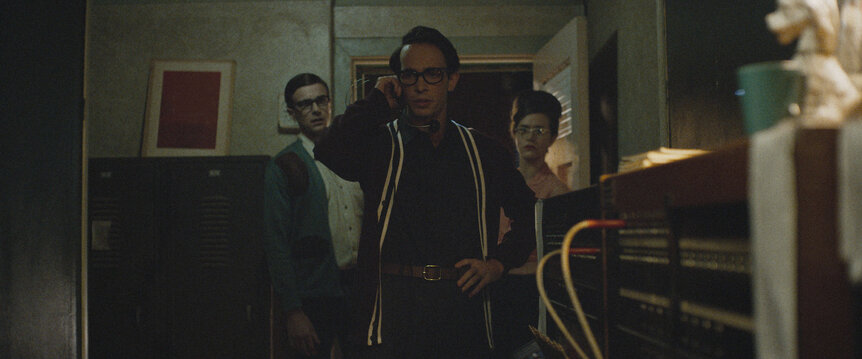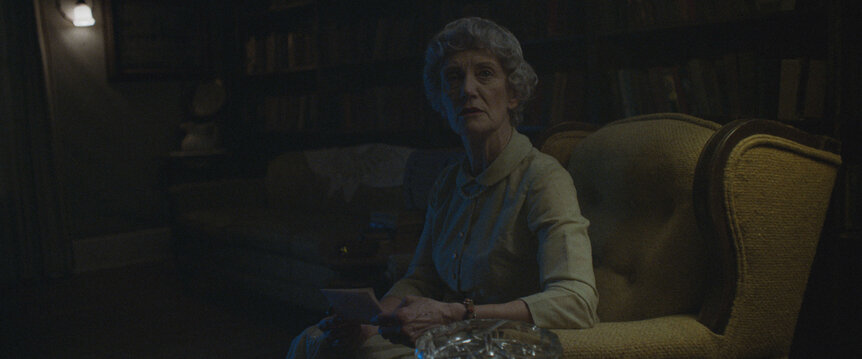Create a free profile to get unlimited access to exclusive videos, sweepstakes, and more!
The Vast of Night is an eerie, Easter egg-filled homage to classic sci-fi

One of the few new films in theaters right now – well, it's in drive-ins — is the Slamdance hit The Vast of Night, which also starts streaming on Amazon Prime on Friday. It's an unusually quiet sci-fi exercise that draws you in with its long, hypnotic tracking shots and muted performances. The movie is set in a small town in New Mexico in the 1950s — the golden age of sci-fi to which it alludes — and it focuses on a teenage switchboard operator named Fay (Sierra McCormick) and a late-night radio DJ named Everett (Jake Horowitz).
The pair are having an uneventful evening in their uneventful town when things suddenly start getting weird. Lights begin flickering, a strange sound is heard on local phone lines, and a man calls in to Everett's show with a very curious story to tell. So, Fay and Everett join forces to investigate.
The movie's director, Andrew Patterson, talked with SYFY WIRE about his filmmaking influences, hidden Easter eggs to keep an eye out for, and why it would be worth your while to play a part of the movie backward.
In addition to releasing this on streaming, Amazon partnered with drive-ins to get this movie up on screens — very 1950s. How did that come together, and what would make a good pairing for this movie in a drive-in double feature?
Almost as soon as we realized that this wasn't going to be able to have the theatrical release we intended, everyone sort of realized, "Wait a minute… what about drive-ins?" I think over 30 drive-ins jumped in. I think some are running it with Super 8, which is kind of a spiritual predecessor to our movie a little bit. In a lot of cases, the drive-in had to pair it with something that would get more people to show up and then be surprised by our quiet, tiny movie. If I were going to pick the film before it, I might pick Invasion of the Body Snatchers. If I were going to pick to film after it, I would probably pick Ridley Scott's original Alien movie from 1979.
Invasion of the Body Snatchers would set up some of the Easter eggs you've hidden in the film, like the reference to a Grimaldi family….
I'm trying to remember how many Easter eggs are in there. We also named San Mirial Valley after Santa Mira in Invasion of the Body Snatchers.
And Everett's radio station, WOTW, that's for The War of the Worlds, right? But…
Are you going to give me flack about there not being "W" call letters west of the Mississippi? That's my favorite, when people try to call us out on that. But if you dig into it, even to this day, there are at least a few "W" call letters west of the Mississippi. Trust me, with as much research as we did, we did not make that mistake.
Another Easter egg is that the movie is supposed to look like it was shot on the Universal Studios backlot. A lot of movies — Back to the Future, Gremlins — all used the exact same courthouse, so all those towns look exactly the same. We wanted it to feel like a Twilight Zone, the first episode of which was also shot on that backlot. And we actually included some slightly inaccurate things in our film to evoke the spirit of a movie or TV show that was shot on that backlot, because then they wouldn't have bothered doing much research on a small town in New Mexico. So that's sort of a joke. Yann Demange's movie '71 was also an influence for the aesthetic. When I saw that movie in 2014, I was gobsmacked by how it works and how fast it was. The thing I had never seen before was how they lit that movie, the characters never landed in perfect pools of light. Everything looked available. I really wanted to make a movie that looked that way.
This is a film about the art of listening, a concern that's woven into the audio design and the story itself. We have to strain to understand some characters at first — we don't see them in close-ups and they're talking very fast, and talking in slang, too. By the time we do get some close-ups, the characters are struggling to hear things themselves. It made me want to rewatch certain scenes to make sure I got them.
That was always the intention. I cut my teeth watching dozens of Robert Altman movies, where what you just described was the point. I remember working as a projectionist in 2001 when the movie Gosford Park came out, and at every showing, somebody came out and said, "We can't hear what they're saying." We would turn up the volume, but people weren't used to the fact that so many little details that don't necessarily concern the plot would be talked about all over the movie.
The fall before we made this movie, Aaron Sorkin's movie on Steve Jobs came out, and I remember, 15 seconds into it, going, "I'm going to have to rewatch this." Richard Linklater movies — Before Sunrise, Before Sunset, Before Midnight — were also heavy on my mind, in terms of using that kind of dialogue to get to know the characters. And All the President's Men taught me that you could build a mystery around phone calls. An actor like Jake Horowitz, who plays Everett, can take me to places with his eyes that I couldn't go to if I cut to that other side of that phone call. Same with Sierra McCormick, who plays Fay, when she discovers a sound. You can go into a trance watching them unfurl this mystery.
The movie also contains soliloquies from often-unheard voices — women, people of color. So the message isn't only that we need to listen, but who we need to listen to?
One hundred percent. This movie was written before the #MeToo movement, but we wanted to have really strong roles for women, people of color, and people over a certain age. There was a discussion whether we could lower the age of our old lady in the third act, but if you listen to her story, if you change when she was born, you change the whole story. That added an interesting layer to the possibility that most of what was going on was the truth.
Where did the old lady's chant come from? What language was that?
That's something our actress Gail Cronauer came up with. I'm pretty sure you can play it backwards. I'm excited to see if people pick up what cryptic message might be in there. Another thing to listen for — we did a very slight wink to 2001: A Space Odyssey. One of our musical themes is the first three notes of that, which is foreshadowing where this story is headed.
What about the strange sound that everyone is trying to decipher — that sort of mumbling, clicking thrum? How did you create that?
Oh my word! It was two brilliant sound designers working for six months to create something new. It's a lot of different, overlapping things. There are instruments in there. There are human throat noises. There is feedback. We wanted it to not be threatening — to draw you in, not freak you out.
Without spoiling anything, how did you decide how much to solve the mystery at the end?
It was complicated. If you show nothing, people get annoyed. And everyone has a different idea of what they want to see at the end of a movie like this. We wanted to strike a balance of hitting the right note, and more importantly, we wanted to capture what it would feel like – the human experience of something you've never experienced before. We really tried to hone in on that, and not go towards something else. Some viewers won't agree — they'll expect a different ending than the one we gave them. I can tell you that the movie they want may exist somewhere else, but it's not The Vast of Night. [Laughs.]
















